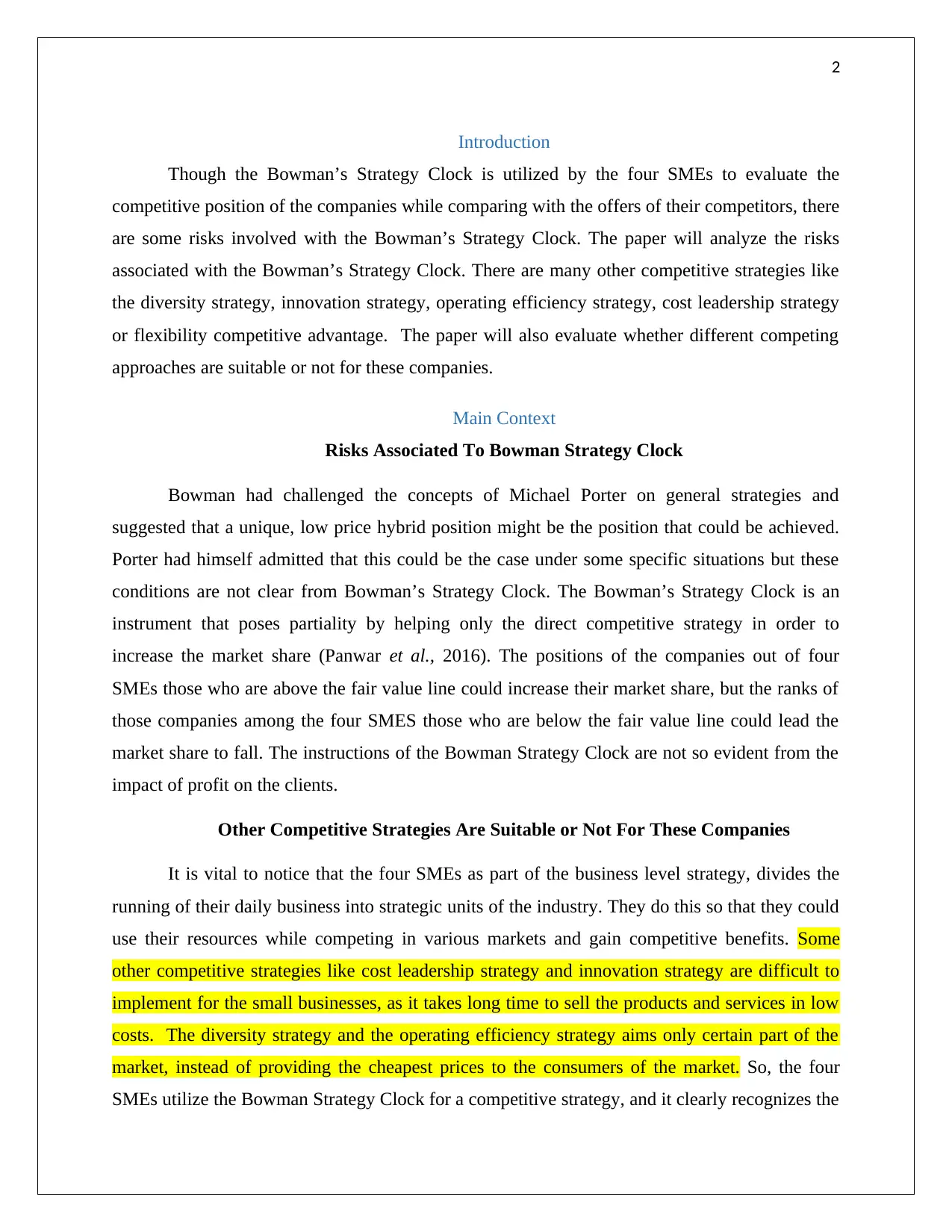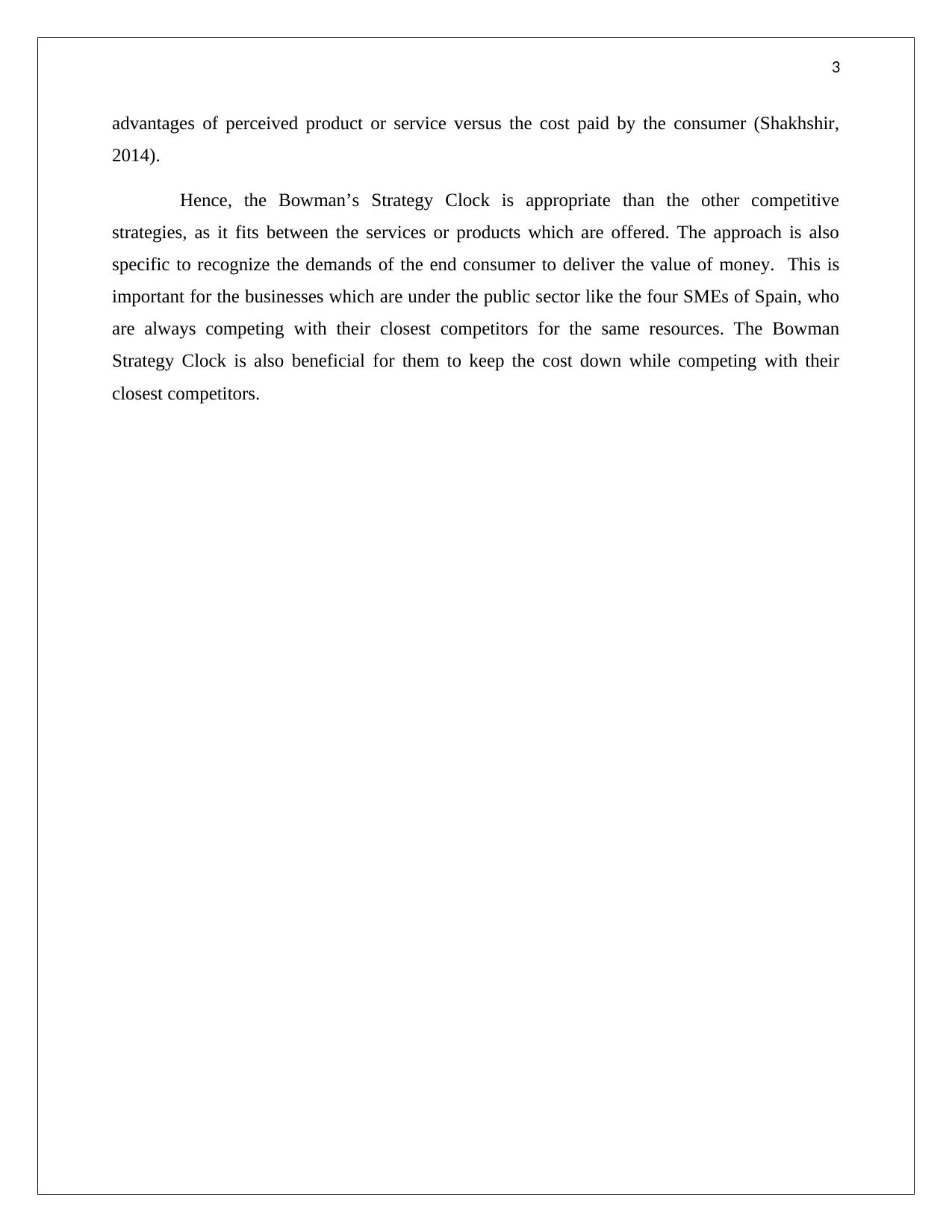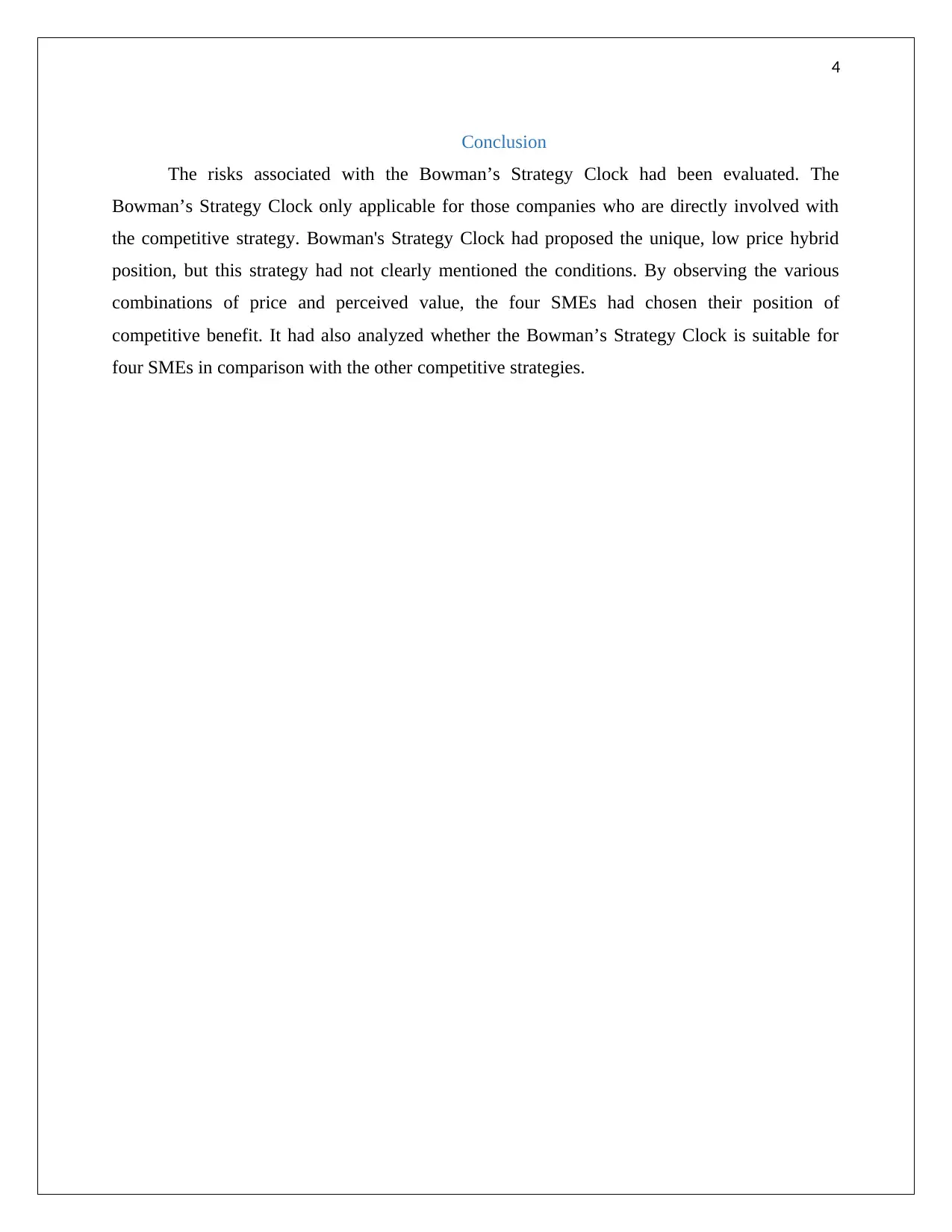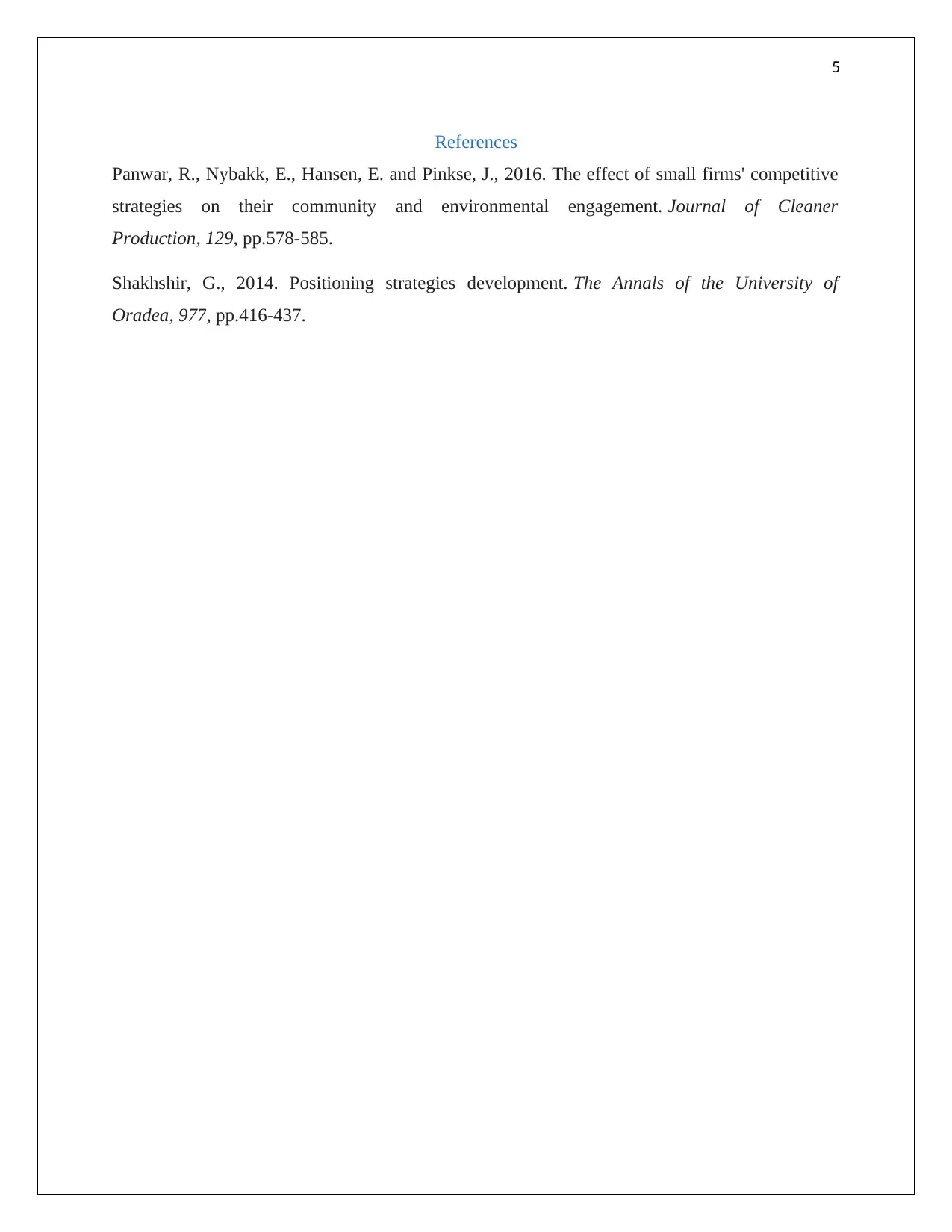Strategic Analysis: Risks of Bowman's Strategy Clock and SMEs
VerifiedAdded on 2023/05/31
|6
|738
|192
Report
AI Summary
This report delves into the risks associated with Bowman's Strategy Clock, a tool used to evaluate the competitive positions of companies, particularly focusing on its application to Small and Medium Enterprises (SMEs). It highlights the potential drawbacks of the clock, such as its partiality towards direct competitive strategies and the lack of clear instructions regarding the impact of profit on clients. The report then evaluates the suitability of Bowman's Strategy Clock compared to other competitive strategies like cost leadership, innovation, diversity, and operating efficiency, concluding that the Bowman's Strategy Clock is appropriate for SMEs as it effectively considers the perceived value of a product or service against its cost. It also emphasizes the importance of this approach for businesses in the public sector, enabling them to maintain competitive advantage and manage costs effectively. The report concludes by summarizing the identified risks and reiterating the benefits of the Bowman's Strategy Clock for SMEs in strategic decision-making.
1 out of 6













![[object Object]](/_next/static/media/star-bottom.7253800d.svg)